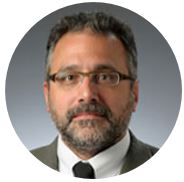_Page_3_edit.png?1766638868)
The 1st International Electronic Conference on Mineral Science
Part of the International Online Conference on Mineral Science series
16–31 July 2018
- Go to the Sessions
- Event Details
Welcome from the Chairs
You are cordially invited to participate in the 1st International Electronic Conference on Mineral Science, sponsored by the MDPI open access journal Minerals. This is a new initiative which offers the opportunity for researchers engaged in the study of mineral science to present their research and exchange ideas with their colleagues. We take full advantage of the Internet, removing the need to travel and participation expenses.
As this is the first conference in mineral science, the range of topics will be very general. The conference will cover the following broad themes:
- Mineral Processing
- Environmental Mineralogy
- Mineral Deposits
- Mineral Geochemistry and Geochronology
- Chemistry and Crystallography of Mineralogical Materials
- Nanominerals and Mineral Surfaces
This is a virtual conference held at www.sciforum.net/. Sciforum.net is a platform developed and sponsored by MDPI to organize electronic conferences, and to provide our community with the technical support for hosting our digital conferences.
The participation is free of charge—both for authors and attendees. Accepted papers will be gathered in the Proceedings of the conference. Selected extended versions of the papers will be published in journal Minerals with a discount of 20% on the Article Processing Charge (ISSN ISSN 2075-163X; Impact Factor: 2.088 (2016); Minerals).
I am looking forward to participate in exciting discussions, hearing new ideas and perspectives in the field and welcoming all participants to the online conference.
Best regards,
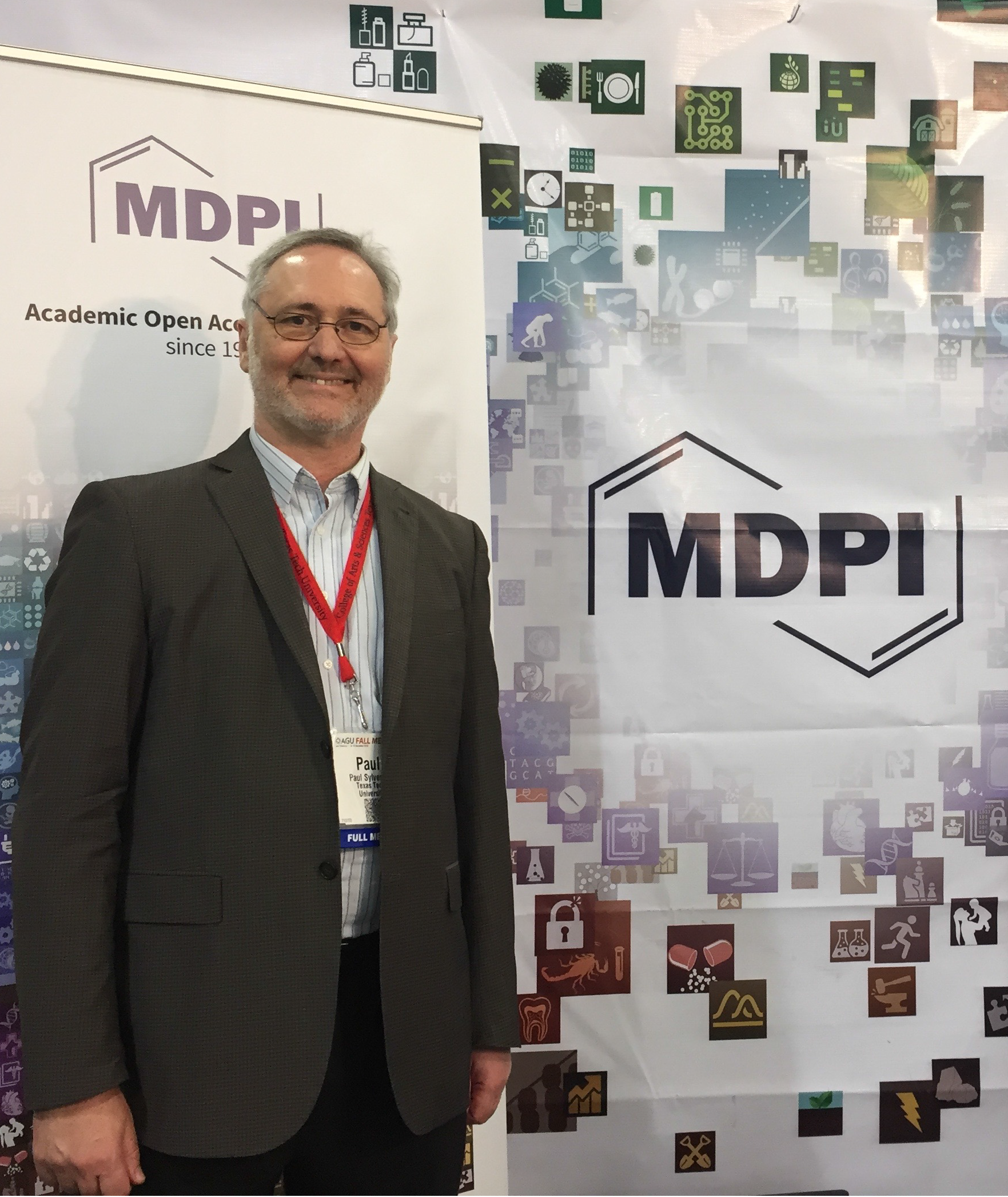
Prof. Dr. Paul Sylvester
Chair of the 1st International Electronic Conference on Mineral Science
Editor-in-Chief, Minerals
Endowed Pevehouse Chair Professor, Department of Geosciences, Texas Tech University, Lubbock, TX 79409-1053, USA
Paul Sylvester has been the Endowed Pevehouse Chair Professor of Geosciences at Texas Tech University since 2014. He has held previous research and teaching positions at NASA Johnson Space Center, The University of Chicago, Australian National University and Memorial University of Newfoundland (Canada). His research interests are focused on mineral geochemistry and geochronology, particularly as applied to understanding provenance, correlation and diagenesis of lithostratigraphic units. To support his research program, he has developed and operates a laser ablation – multicollector – magnetic sector – ICPMS laboratory at Texas Tech. Paul holds a BSc degree from Purdue University (Indiana, USA) and a PhD degree from Washington University in St. Louis (Missouri, USA). He is a Fellow of the Geological Society of America and Mineralogical Society of America.
Instructions for Authors
Submissions should be done by the authors online by registering with www.sciforum.net, and using the "Start New Submission" function once logged into system.
- Scholars interested in participating with the conference can submit their abstract (about 200-250 words covering the areas of manuscripts for the proceedings issue) online on this website until 31 May 2018.
- The Conference Committee will pre-evaluate, based on the submitted abstract, whether a contribution from the authors of the abstract will be welcome for the 1st International Electronic Conference on Mineral Science. All authors will be notified by 15 June 2018 about the acceptance of their abstract.
- If the abstract is accepted for this conference, the author is asked to submit the manuscript, optionally along with a PowerPoint and/or video presentation of his/her paper (only PDF), until the submission deadline of 30 June 2018.
- The conference proceedings papers and presentations will be available on https://sciforum.net/conference/IECMS2018 for discussion during the time of the conference 16–31 July 2018. Accepted papers will be published in the Journal Proceedings. After the conference, the authors are recommended to submit an extended version of the proceeding papers to the journal Minerals with 20% discount of the APC charges.
Manuscripts for the proceedings issue must have the following organization:
First page:
- Title
- Full author names
- Affiliations (including full postal address) and authors' e-mail addresses
- Abstract
- Keywords
- Introduction
- Methods
- Results and Discussion
- Conclusions
- (Acknowledgements)
- References
Manuscripts should be prepared in MS Word or any other word processor and should be converted to the PDF format before submission. The publication format will be PDF. There is no page limit on the length, although authors are asked to keep their papers as concise as possible.
Authors are encouraged to prepare a presentation in PowerPoint or similar software, to be displayed online along with the Manuscript. Slides, if available, will be displayed directly in the website using Sciforum.net's proprietary slides viewer. Slides can be prepared in exactly the same way as for any traditional conference where research results can be presented. Slides should be converted to the PDF format before submission so that our process can easily and automatically convert them for online displaying.
Besides their active participation within the forum, authors are also encouraged to submit video presentations. If you are interested in submitting, please contact the conference organizer (minerals@mdpi.com) to get to know more about the procedure. This is an unique way of presenting your paper and discuss it with peers from all over the world. Make a difference and join us for this project!
Posters will be available on this conference website during and after the event. Like papers presented on the conference, participants will be able to ask questions and make comments about the posters. Posters that are submitted without paper will not be included in the proceedings of the conference.
Submission: Manuscripts should be submitted online at www.sciforum.net/login by registering and logging in to this website.
Microsoft Word
Authors must use the Manuscript Template to prepare their manuscript. Using the template file will substantially shorten the time to complete copy-editing and publication of accepted manuscripts. Manuscript prepared in MS Word must be converted into a single file before submission. Please do not insert any graphics (schemes, figures, etc.) into a movable frame which can superimpose the text and make the layout very difficult.
Manuscript Preparation
- Paper Format: A4 paper format, the printing area is 17.5 cm x 26.2 cm. The margins should be 1.75 cm on each side of the paper (top, bottom, left, and right sides).
- Formatting / Style: Papers should be prepared following the style of IECMS2018 template. The full titles and the cited papers must be given. Reference numbers should be placed in square brackets [ ], and placed before the punctuation; for example [4] or [1-3], and all the references should be listed separately and as the last section at the end of the manuscript.
- Authors List and Affiliation Format: Authors' full first and last names must be given. Abbreviated middle name can be added. For papers written by various contributors a corresponding author must be designated. The PubMed/MEDLINE format is used for affiliations: complete street address information including city, zip code, state/province, country, and email address should be added. All authors who contributed significantly to the manuscript (including writing a section) should be listed on the first page of the manuscript, below the title of the article. Other parties, who provided only minor contributions, should be listed under Acknowledgments only. A minor contribution might be a discussion with the author, reading through the draft of the manuscript, or performing English corrections.
- Figures, Schemes and Tables: Authors are encouraged to prepare figures and schemes in color. Full color graphics will be published free of charge. Figure and schemes must be numbered (Figure 1, Scheme I, Figure 2, Scheme II, etc.) and a explanatory title must be added. Tables should be inserted into the main text, and numbers and titles for all tables supplied. All table columns should have an explanatory heading. Please supply legends for all figures, schemes and tables. The legends should be prepared as a separate paragraph of the main text and placed in the main text before a table, a figure or a scheme.
For further inquiries please contact the Conference Secretariat.
It is the authors' responsibility to identify and declare any personal circumstances or interests that may be perceived as inappropriately influencing the representation or interpretation of clinical research. If there is no conflict, please state here "The authors declare no conflict of interest." This should be conveyed in a separate "Conflict of Interest" statement preceding the "Acknowledgments" and "References" sections at the end of the manuscript. Financial support for the study must be fully disclosed under "Acknowledgments" section. It is the authors' responsibility to identify and declare any personal circumstances or interests that may be perceived as inappropriately influencing the representation or interpretation of clinical research. If there is no conflict, please state here "The authors declare no conflict of interest." This should be conveyed in a separate "Conflict of Interest" statement preceding the "Acknowledgments" and "References" sections at the end of the manuscript. Financial support for the study must be fully disclosed under "Acknowledgments" section.
Copyright
MDPI AG, the publisher of the Sciforum.net platform, is an open access publisher. We believe that authors should retain the copyright to their scholarly works. Hence, by submitting a Communication paper to this conference, you retain the copyright of your paper, but you grant MDPI AG the non-exclusive right to publish this paper online on the Sciforum.net platform. This means you can easily submit your paper to any scientific journal at a later stage and transfer the copyright to its publisher (if required by that publisher).
List of accepted submissions (11)
| Id | Title | Authors | Poster PDF | ||||||||||||||||||||||||||||||||||||||
|---|---|---|---|---|---|---|---|---|---|---|---|---|---|---|---|---|---|---|---|---|---|---|---|---|---|---|---|---|---|---|---|---|---|---|---|---|---|---|---|---|---|
| sciforum-019106 | Nb-Ta-Ti oxides in topaz granites of the Geyer granite stock (Erzgebirge Mts., Germany) |

|
Show Abstract |
||||||||||||||||||||||||||||||||||||||
|
Nb-Ta-Ti-bearing oxide minerals (Nb-Ta-bearing rutile, columbite-group minerals, W-bearing ixiolite) represent the most common host in high-F, high-P Li-mica granites and related rocks from the Geyersberg granite stock in the Krušné hory/Erzgebirge Mts. batholith. The Geyersberg granite stocks forms a pipe like granite stock composed of fine- to middle-grained, porphyritic to equigranular topaz- Li mica granites, containing up to 6 vol. % of topaz. Intrusive breccias on the NW range of the granite stock are composed of mica schist- and muscovite-gneiss fragments enclosed in fine-grained aplitic granite. Granites are partly greisenised, mainly along of steeply dipping NW-SE, and NE-SW trending faults. Quartz-Li-mica-topaz greisens are mineralised by cassiterite, arsenopyrite, wolframite and molybdenite. The high-F, high-P Li-mica Geyersberg granites, which represent the youngest granite intrusions in the Western and Middle Krušné Hory/Erzgebirge plutons, are highly fractionated S-type granites (ASI = 1.2–1.5) with Nb/Ta ratio = 0.74–1.12 and depletion in high-field-strength elements (HFS). Columbite group minerals occur usually as anhedral grains that display patchy zoning. These minerals are represented by columbite-(Fe) with Mn/(Mn+Fe) ratio ranging from 0.07 to 0.32. The rare Fe-rich W-bearing ixiolite occurs as small needle-like crystals. The ixiolite is Fe-rich with relatively low Mn/(Mn + Fe) and Ta/(Ta + Nb) values (0.10–0.15 and 0.06–0.20 respectively). Owing to the high W content (19.8–34.9 wt. % WO3, 0.11–0.20 apfu), the sum of Nb + Ta in the ixiolite does not exceed 0.43 apfu. The Ti content is 1.7–5.7 wt. % TiO2 and Sn content is relatively low (0.3–4.1 wt. % SnO2) |
|||||||||||||||||||||||||||||||||||||||||
| sciforum-020353 | Two-stage SART process: A feasible alternative for gold cyanidation plants with high zinc and copper contents | , , |

|
Show Abstract |
|||||||||||||||||||||||||||||||||||||
|
The SART process (SP) has been successfully implemented in gold cyanidation plants to address issues associated with high cyanide-soluble copper content the ores. However, this process could produce a relatively low grade precipitate, descreasing the sale price, when gold plants have high zinc and copper content in their solutions. A potential option in this case would be use of a two-stage SART process (TSSP) to produce separate zinc and copper precipitates. The additional equipment involved with this process would increase the capital cost, thereby generating concerns about the optimal range of metal contents that could justify this option. This study presents a methodology to quantify the feasible range of Cu/Zn concentrations that would justify a two-stages SART process. The study is based on a thermodynamic model and a simple economic evaluation. Results show the TSSP is preferred when the Cu/Zn ratio ranges between 0.2 and 1.5 with copper concentration higher than 500 mg/L. The TSSP appears to be a viable option to consider for gold plants having concentrations of copper and zinc higher than 500 and 350 mg/L respectively. |
|||||||||||||||||||||||||||||||||||||||||
| sciforum-020648 | First zunyite-bearing lithocap in Greece: The case of Konos Hill Mo-Re-Cu-Au porphyry system. | , , , , , , , |

|
Show Abstract |
|||||||||||||||||||||||||||||||||||||
|
Zunyite is a rare F- and Cl- bearing mineral related to advanced argillic alteration zones of porphyry/epithermal style mineralization and is considered as a pathfinder mineral towards high-grade Au ores. We report here the first occurrence of zunyite along with alunite, quartz, APS minerals, diaspore, pyrophyllite and kaolinite in the metallogenic province of Western Thrace. The Konos Hill prospect in Western Thrace comprises a telescoped porphyry Mo-Re-Cu-Au system, overprinted by high-sulfidation mineralization. In low topographic levels, porphyry-style mineralization is exposed and comprises pyrite-chalcopyrite-bornite-molybdenite-rheniite-bearing quartz-stockwork. Host rocks are subvolcanic bodies of granodioritic composition that have suffered pervasive sericitic alteration. High-sulfidation epithermal-style alteration occupies the higher topographic levels and has caused significant overprinting of the porphyry-style mineralization and alteration. It consists of silicified zones related to N-S and E-W trending faults, which grade outwards to advanced argillic alteration assemblages. These assemblages are characterized by abundant alunite and quartz, with minor presence of diaspore, APS minerals, kaolinite, pyrophyllite and zunyite. Zunyite forms euhedral crystals that reach in size up to 300μm. They sometimes include minor quartz and are associated with alunite, APS minerals and pyrophyllite. EPMA data revealed variations in the F and Cl content of zunyite, that range between 3.62-6.54 wt.% and 2.65-3.15 wt.% respectively. Alunite supergroup minerals display a wide compositional range and are represented by members of the alunite, beudanite and plumbogummite subgroups. Alunite and natroalunite constitute the most common advanced-argillic alteration minerals and are found in both quartz+zunyite and quartz+diaspore+pyrophyllite assemblages. Available mineral-chemical data favor the existence of compositions that cover a complete solid-solution series between Na- and K-rich varieties. Common mode occurrences comprise euhedral, tabular-shaped and rarely pseudocubic crystals. APS minerals are usually found as pseudocubic crystals forming the cores of tabular alunites. Analyzed compositions comprise woodhouseite (Sr-, Ce- and Sr-Ce- rich members were found). Diaspore forms aggregates of euhedral, coarse-grain crystals scattered in strongly silicified rock. Finally, pyrophyllite when present, forms acicular aggregates in the matrix along with diaspore and quartz. Available data suggest that the formation of the studied advanced argillic alteration assemblages is hypogene and due to ascending magmatic fluids released by the subvolcanic bodies. Mineralogical variances in the different assemblages may reflect distinct degrees of hydrothermal alteration. Co-existence of zunyite, APS minerals and pyrophyllite could be used to set constraints on the physicochemical conditions of formation of the assemblage, as the volatile-rich nature of the minerals reflects a narrow range of pH and temperature in hydrothermal systems. |
|||||||||||||||||||||||||||||||||||||||||
| sciforum-020657 | The Ni-Bi-Au association at Kamariza and ‘km-3’, Lavrion ore district, Greece | , , , , , , , |

|
Show Abstract |
|||||||||||||||||||||||||||||||||||||
|
The Lavrion ore district, located about 50 km southeast of Athens (Greece), contains a variety of ore types including porphyry Mo-W, skarn Fe-Cu-Bi-Te, carbonate-replacement Pb-Zn-Cu-Ag±Au-Bi and vein-type Pb-As-Sb-Ag and Pb-Ni-Bi-Au (Solomos et al. 2004; Voudouris et al. 2008; Bonsall et al. 2011; Kolitsch et al. 2015). Mineralization was synchronous to the intrusion of a Miocene granodiorite body in the footwall of the Western Cycladic Detachment System and related felsic dikes and sills within marbles and schists, which locally cross-cut the detachment. Carbonate-sericite altered microgranodioritic dikes and sills at Kamariza are crosscut by porphyry-style quartz-sericite-calcite stockworks hosting pyrrhotite, pyrite, arsenopyrite, chalcopyrite and sphalerite (e.g. the same metallic minerals present in the carbonate-replacement and vein ores). The dikes and sill display enrichment in Ni (up to 220 ppm), Cu (up to 175 ppm), As (up to 510 ppm), Mo (up to 6 ppm) and Pb (up to 830 ppm), as measured by ICP-MS. The Ni-Bi-Au association at the Clemence mine in Kamariza is a vein-type mineralization developed at the contact between marbles and schists. The mineralization also expands in the marbles unit, forming carbonate-replacement bodies. It consists of native gold and bismuthinite intergrown with gersdorffite, enclosed in galena. Bulk ore analyses reveal Au and Ag grades exceeding 100 ppm, Pb and Zn > 1 wt. %, Ni up to 9700 ppm, Co up to 118 ppm, Sn > 100 ppm and Bi > 2000 ppm. New mineralogical and mineral-chemical data from the Ni-Bi-Au association suggest gold deposition with oscillatory zoned gersdorffite following initial deposition of pyrite and arsenopyrite. Oscillatory zoning in gersdorffite is related to variable As, Ni and Fe contents, indicating fluctuation of arsenic fugacity in the hydrothermal fluid. Chalcopyrite, tennantite and enargite rimming gersdorffite suggest an evolution towards higher sulfur fugacity in the mineralization with time. Stannite enclosed in pyrite and native antimony enclosed in galena are decribed here for the first time in the Clemence ore assemblage. At the ‘km-3’ locality, the Ni sulfides and sulfarsenides, vaesite, millerite, ullmannite and polydymite, are enclosed in gersdorffite and/or galena. At this location mineralization occurs in the form of calcite and galena veins crosscutting and cementing brecciated marbles, within the detachment fault. Mineralization is enriched in Mo (up to 36 ppm), As and Ni (both >1 wt. %), Co (up to 1290 ppm), whereas other elements occur in lesser amounts: Te (up to 2 ppm), Sn (up to 8.5 ppm), Bi (up to 1.3 ppm). Gersdorffite at ‘km-3’ is homogenous and contain less Fe (up to 2 wt. %) than that from the Clemence mine (up to 9 wt. %), probably related to lower temperatures of their formation. The geochemical and mineralogical data from this study support previous models for a magmatic contribution of metals to the ore system, although a remobilization from previous mineralization and/or country rocks cannot be ruled out. |
|||||||||||||||||||||||||||||||||||||||||
| sciforum-020658 | Gold deposits in Greece: Hypogene ore mineralogy as a guide for exploration | , , , , , , , |

|
Show Abstract |
|||||||||||||||||||||||||||||||||||||
|
A common feature of precious metal mineralization in Greece is the close relationship between gold and silver with other trace minerals incorporating bismuth, tellurium and selenium in their structure. These minerals can be considered as pathfinders for gold as they may guide exploration to discover distinct types of gold-bearing ores. Primary gold mineralization in Greece can be subdivided in three groups regarding the mineral associations with gold: (A1) mineralization where native gold and Au-Ag tellurides accompany either Bi-sulfosalts, native Bi and reduced-type Bi-sulfotellurides (joséite-A, joséite-B, pilsenite) at Koronouda, Laodikino/Kilkis area, Stanos, Olympias-Stratoni and Fissoka at Chalkidiki area and Angistron Mt/W. Rhodope), or (A2) accompany Bi-sulfosalts with oxidized-type Bi-sulfotellurides (e.g. tetradymite and tellurobismuthite) typical for Aberdeen, Palea Kavala, Thasos island, as well as for the calc-alkaline and alkaline-hosted porphyry and epithermal deposits/prospects in western Thrace, Limnos island and Skouries; (B) deposits which lack tellurides but include Bi-sulfosalts and native gold (e.g. the carbonate replacement deposit of Lavrion, the porphyry-Cu-Mo-Au deposits of Maronia and Stypsi, Lesvos Island, and the intrusion-related Kimmeria Cu-Mo-Au deposit); and (C) deposits/prospects where native gold and Au-Ag-tellurides and other base metal tellurides are abundant and Bi-tellurides and Bi-sulfosalts are missing (the metamorphic rock-hosted quartz veins at Panormos/Tinos and Kallianou/Evia Islands, and the epithermal shallow submarine mineralization at Milos). Bismuth and tellurium are considered to be derived from magma and recognition of bismuth sulfosalts and bismuth tellurides, as well as of various types of base (and precious) metal tellurides in the mineralization, is a strong evidence of magmatic-hydrothermal contribution and of adjacent concealed intrusives (e.g. Perama Hill and Pefka deposits are cases where no granitoids are exposed). The absence of bismuth minerals and the presence of precious and base metal tellurides (as is the case for Milos, Tinos and Evia islands) may still suggest magmatic contributions but in more distal setting from a buried granitoids at depth. Selenium (and/or bismuth) bearing galena and Se-bearing bismuth chalcogenides present at Kimmeria intrusion-hosted veins, at Lavrion, as well as in several porphyry-epithermal deposits in northern Greece (e.g. Kassiteres-Sapes, Pagoni Rachi, Perama Hill, Pefka and Skouries) are indicative of high-temperature, initial stages of ore deposition from magmatic-hydrothermal fluids, and proximity to porphyry mineralized centers. When recognized in a mineralization as an accessory mineral, Se-bearing galena could guide exploration towards unexposed granitoids. Bornite and molybdenite are present in the potassic and sericitic alteration zones of Skouries and Pagoni Rachi porphyry deposits, where they are intimately associated with native gold and gold-silver tellurides. However bornite may also occur in intermediate-sulfidation epithermal veins at Kassiteres-Sapes and Pagoni Rachi areas and molybdenite at Stanos and Syros Island without any obvious relationship to a granitoid. Both minerals can be applied for discovery of high temperature mineralized zones in the system. |
|||||||||||||||||||||||||||||||||||||||||
Conference Organizers
Conference Chair
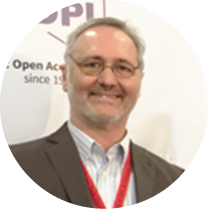
Prof. Dr. Paul Sylvester
Texas Tech University, USA
Section Chairs
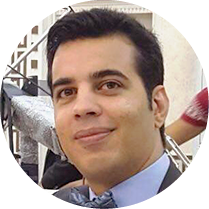
Prof. Dr. Saeed Chehreh Chelgani, University of Michigan, USA
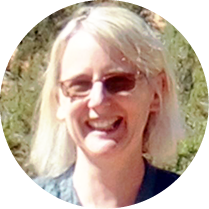
Prof. Dr. Karen Hudson-Edwards, University of Exeter, UK
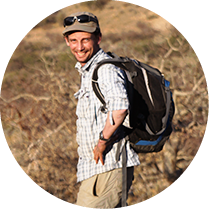
Prof. Dr. David Chew, Trinity College Dublin, Ireland
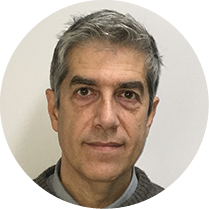
Assoc. Prof. Panagiotis Voudouris, National and Kapodistrian University of Athens, Greece
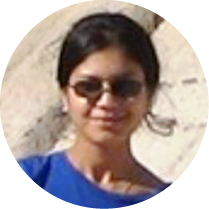
Dr. Sytle M. Antao, University of Calgary, Canada
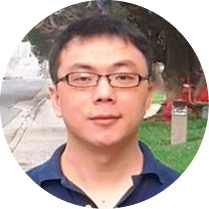
Dr. Runliang Zhu, Guangzhou Institute of Geochemistry Chinese Academy of Sciences, China
Scientific Advisory Committee Members
Prof. Dr. Antonio Simonetti, University of Notre Dame, USA
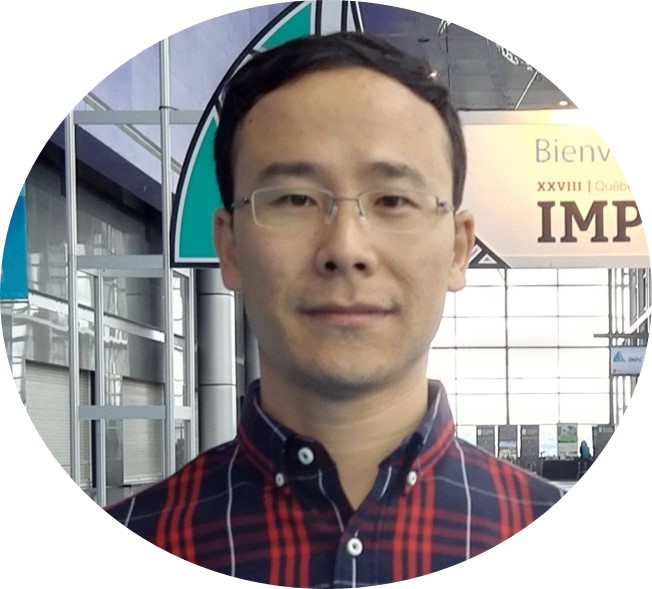
Dr. Zhiyong Gao, Central South University, China
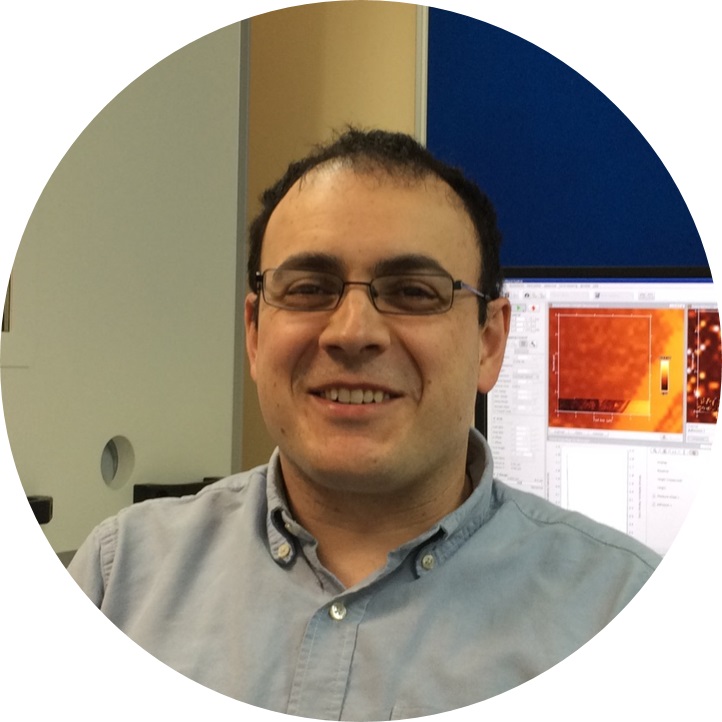
Dr. Pablo Cubillas, Durham University, UK
Conference Secretariat
Ms. Sweater Shi
E-Mail: iecms@mdpi.com
Sponsoring Opportunities
For information regarding sponsoring opportunities, please contact Ms. Sweater Shi.
E-Mail: sweater.shi@mdpi.com or iecms@mdpi.com.
Call for Papers
The section Chairs and the scientific committee members are pleased to announce the Call for Papers for the 1st International Electronic Conference on Mineral Science and to invite each researcher working in this exciting field of science to share his/her recent results with his/her colleagues around the world.
The conference will be organized into six sections, which reflect the minerals and mineralogy. It will cover a wide range of aspects, please see the details in each section.
Researchers are invited to provide a short abstract on line at https://www.sciforum.net/login from now until 31 May 2018. Acceptance will be notified within two weeks after submission of the abstract. Then the author(s) will be asked to submit the manuscript, optionally along with a slide show (PPT) (or a video) using the template provided by the conference (see Instructions for Authors). All accepted submissions will be displayed online, at https://sciforum.net/conference/IECMS2018, for discussion during 16-31 July 2018.
Accepted papers will be published in the Journal Proceedings. After the conference, the authors are recommended to submit an extended version of the proceeding papers to the Minerals Special issue with 20% discount of the APC charges.
The Scientific Committee looks forward to receiving contributions in response to this call and will be glad to provide any further information to interested parties. Questions may be addressed to the conference organizer at iecms@mdpi.com or Minerals editorial office at minerals@mdpi.com.
We thank you in advance for your attendance of this conference and look forward to a stimulating exchange.
A. Mineral Processing
Section Chair:
Prof. Dr. Saeed Chehreh Chelgani, Department of Electrical Engineering and Computer Science, University of Michigan, Ann Arbor, MI 48109, USA
Section Information:
As high grade ores have been somewhat depleted, low grade complex deposits are becoming the main source of valued minerals. These disseminated and complicated ores, however, include a huge amount of non-value (unwanted) minerals. The main purpose of mineral processing is to reduce the bulk of the ore which must then be transported to and processed in the smelter. In other words, mineral processing is a combination of relatively cheap methods for separating the valuable minerals from the waste non-value (gangue) minerals. Size (liberation) and mineral properties are two general factors taken into account in mineral separation and processing. Papers for this Section on mineral processing include, without being limited to, the following themes:
- Comminution
- Gravity separation
- Magnetic separation
- Froth flotation
- Hydrometallurgy
B. Environmental Mineralogy
Section Chair:
Prof. Dr. Karen Hudson-Edwards, Environment & Sustainability Institute and Camborne School of Mines, University of Exeter, Penryn Cornwall TR10 9DF, UK
Section Information:
Environmental minerals, like “traditional” minerals, are naturally-occurring solids with definite chemical compositions. Unlike “traditional” minerals, however, they can be formed by both inorganic and organic processes, range from very poorly crystalline to crystalline, and are found in natural and engineered environments such as mines or nuclear waste disposal sites, or biological systems such as the human body. Environmental minerals control the transport and availability of nutrients and contaminants in waters, soils, sediments and dusts. The Environmental Mineralogy Section invites contributions on, but not restricted to, the following themes:
- Characterisation of environmental minerals in Earth surface environments
- Uptake of contaminants and nutrients in environmental minerals
- The environmental mineralogy of mine wastes, contaminated soils, dusts and nuclear wastes
- Environmental biominerals in Earth surface systems and the human body
- Bacteria, archaea, fungi and the formation of environmental minerals
Show all published submissions (1) Hide published submissions (1)
Submissions
List of Papers (1) Toggle list
C. Mineral Deposits
Section Chair:
Assoc. Prof. Panagiotis Voudouris, National and Kapodistrian University of Athens, 157 84 Athens, Greece
Section Information:
Mineral deposits are an essential supply of appropriate commodities for global industrialization. They often show specific associations with particular geologic terrains and vary in abundance as a function of geological time. Many factors are important for the formation of the mineral deposits, including the geotectonic environment, regional structural control, the petrography and geochemistry of the host rocks, the geochemistry of the ore-forming fluids, and the mineral paragenesis, textures and chemistry, etc. These factors affect exploration projects and the mining and extraction processes of the companies which invest considerable amounts of capital to extract the metals, minerals and rocks from deep in the Earths’ crust. Ore-forming models have been generated based on these factors but need modifying as the results of new research are forthcoming. Here, we evaluate how ore deposits form and the ways minerals can be used as pathfinders to the discovery of new deposits.
The Mineral Deposits section is open for contributions on, but not restricted to, the following topics:
- Mineralogy of precious, rare and critical metals in magmatic-hydrothermal ore deposits
- Mineralogy of supergene ore deposits
- The use of mineral compositions in the search for mineral deposits
- Indicator minerals as vectors to ore deposits
- Metal enrichment in existing ore deposits as a result of igneous and metamorphic processes
D. Mineral Geochemistry and Geochronology
Section Chair:
Prof. Dr. David Chew, Department of Geology, Trinity College Dublin, Dublin 2, Ireland
Section Information:
Many new discoveries are being made and problems encountered in the geosciences by looking at individual minerals in exquisite detail at a microscopic level. The "Mineral Geochemistry and Geochronology" Section invites contributions that improve our understanding of the Earth and Solar System using techniques capable of analysing mineral samples at high spatial and temporal resolution.
Contributions on, but not restricted to, the following topics are welcomed:
- Exploration and mining geology
- Advances in mineral analytical techniques
- Innovations in accessory mineral U-Th-Pb petrochronology
- Mineral geochemistry applied to ore deposit processes
- Geochronology and thermochronology applied to geological processes
E. Chemistry and Crystallography of Mineralogical Materials
Section Chair:
Dr. Sytle M. Antao, Department of Geoscience, University of Calgary, Calgary, Alberta T2N 1N4, Canada
Section Information:
The Chemistry and Crystallography Section covers all fundamental aspects of chemistry, crystal structure determination and refinements, properties, phase transitions, and formation conditions of materials of mineralogical interests. We invite contributions to the following topics:
- New approaches in mineralogy, crystallography, and mineral physics
- Ambient and non-ambient crystal chemistry
- Synchrotron and neutron techniques used to investigate material properties
- Reconstructing mineral history and formation conditions
- Biominerals and applications of mineralogy in medicine
F. Nanominerals and Mineral Surfaces
Section Chair:
Dr. Runliang Zhu, Guangzhou Institute of Geochemistry Chinese Academy of Sciences, Guangzhou 510640, China
Section Information:
Mineral surfaces have drawn the interest of scientific communities from several disciplines, in particular earth, environmental, geochemical, soil, and mineral sciences, as a variety of reactions can take place on mineral surfaces, including surface hydration, hydroxylation, adsorption/desorption, surface precipitation, crystal growth, mineral dissolution, oxidation/reduction, catalysis, etc. These reactions then play a central role in many important processes taking place on earth, e.g., the formation and weathering of minerals and rocks; the formation of ore deposits; the formation of soil; geochemical cycling of the elements (with those related to sustainable development of the environment being of particular concern); bioavailability of contaminants and nutrients; self-cleaning of the environment; recording of environmental information; the origins of life. In addition, these reactions can also be applied for various purposes, such as ore processing and extraction, synthesis and applications of mineral-based materials (e.g., mineral-based catalysts, adsorbents, and flocculants).
Modern characterization techniques (e.g., synchrotron-based spectroscopic and scattering methods) in combination with molecular modelling methods, provide atomic-level information to help understand the microstructure and physicochemical properties of minerals surfaces and the reactions that take place. Significant advances have been achieved in this research area in recent decades. However, there is much left to be discovered, particularly because reactions on mineral surfaces are closely related to the environmental quality of near-surface earth, and the sustainable development of humanity.
Nanominerals and mineral nanoparticles are widely distributed in soil, the atmosphere, oceans, groundwater and surface waters, and even in living organisms. Due to the significant size-effects and large portion of surface atoms, nanominerals and mineral nanoparticles are expected to have large mineral surfaces and strong surface reactivity. In this regard, nanominerals and mineral nanoparticles play an important role in a variety of earth and environmental processes, and have been the subject of much current research. The strong surface reactivity of nanominerals and mineral nanoparticles makes them prominent geosorbents and natural catalysts, affecting the geochemical cycling of elements, formation/dissolution of minerals, environmental fate of contaminants, self-cleaning of contaminated sites, etc.
Similarly, in recent years, modern characterization techniques (e.g., powerful high-resolution transmission electron microscopes) help significantly for exploring the microstructure, physicochemical properties, and geochemical behaviors of nanominerals and mineral nanoparticles. However, there still remains huge gaps in our understanding of this research area.
This electronic conference intends to establish a platform for exchanging recent advances in the fields of minerals surfaces and nanominerals, which covers the broad scope of studies mentioned above.













